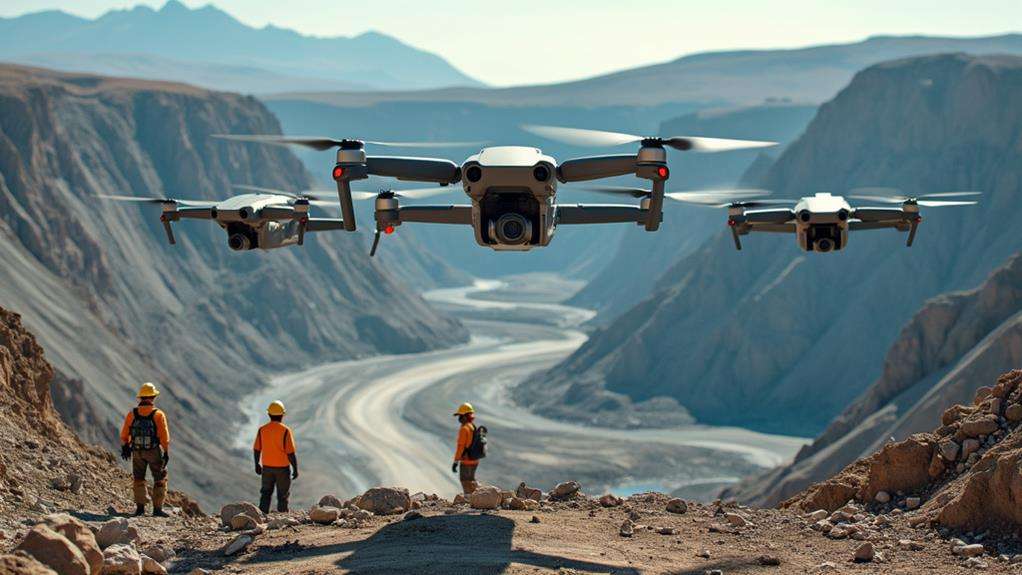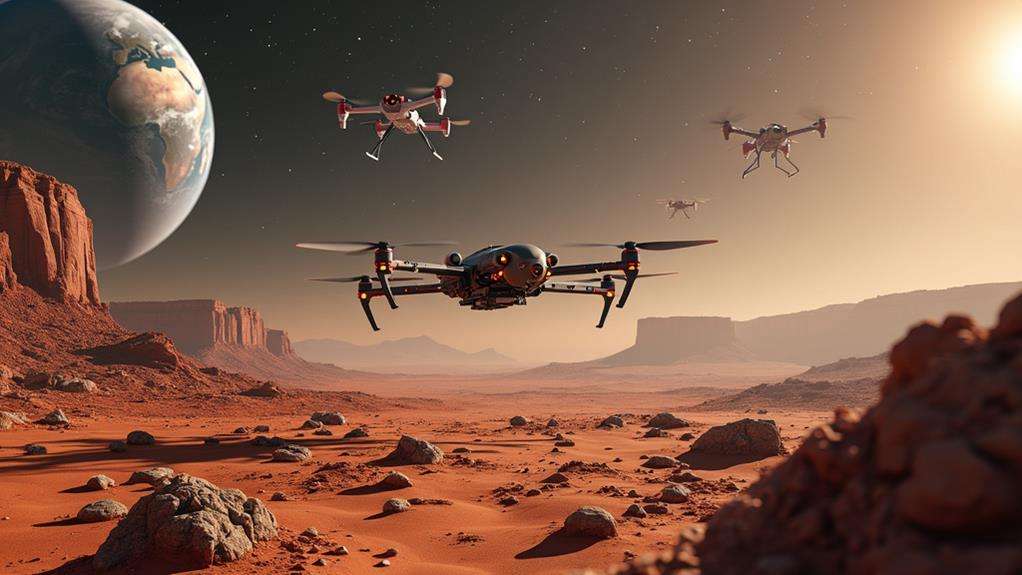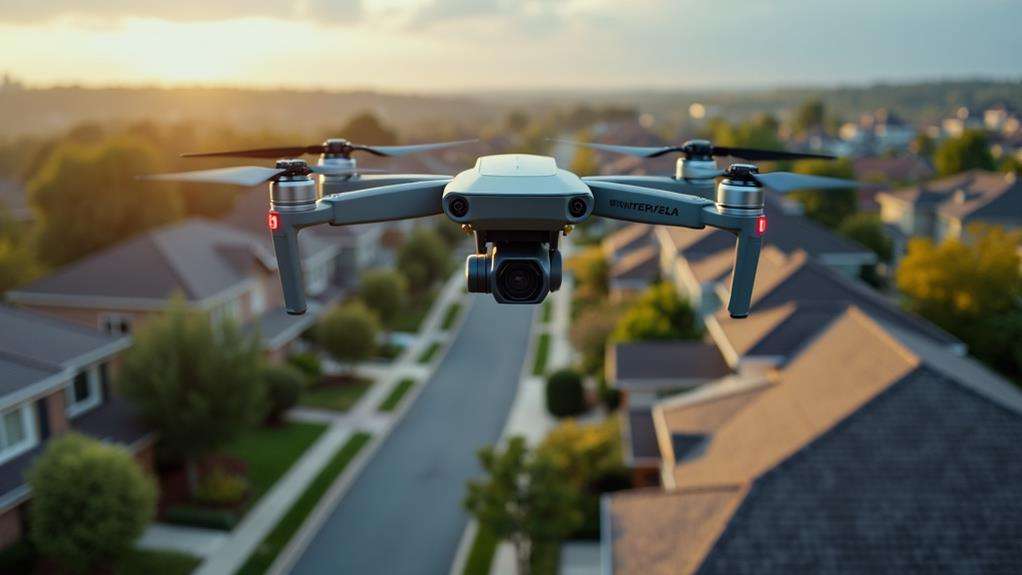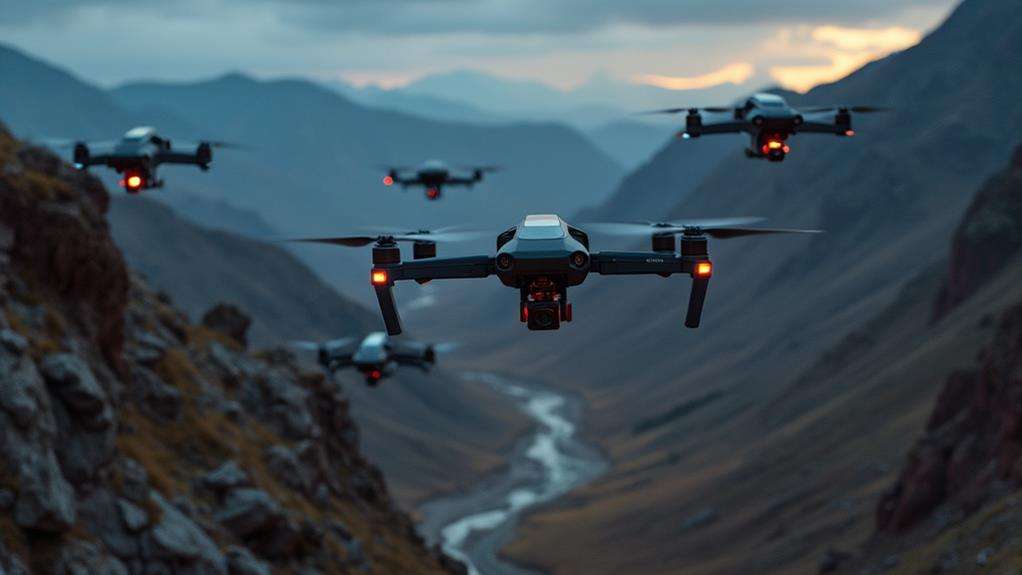How Many UAVS Does the US Have?
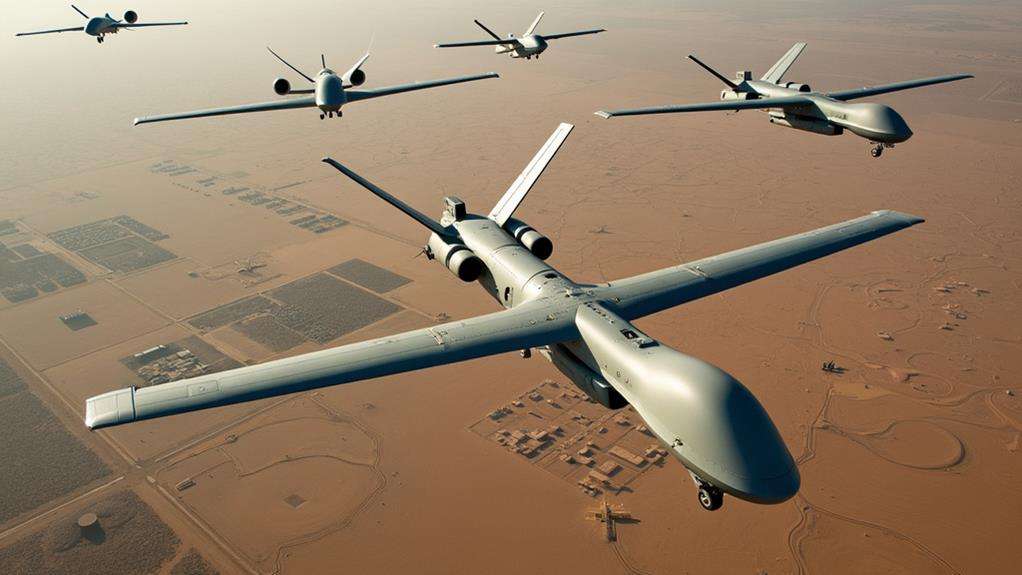
The US military's fleet of UAVs exceeds 11,000 units, including models like the MQ-1 Predator and the RQ-4 Global Hawk, each serving specialized roles such as reconnaissance and precision strikes. Managing this vast inventory involves rigorous regulatory and approval processes, comprehensive training regimens, and consideration of ethical implications. Understanding the operational and strategic significance of these aerial assets reveals a complex framework of technological prowess and military capability.
Overview of UAV Inventory
The U.S. military operates over 11,000 unmanned aerial vehicles (UAVs), comprising a vast and diverse inventory that supports both domestic training and overseas missions. This inventory includes various drone types, each tailored for specific roles and missions. Key among them are the MQ-1 Predator, MQ-9 Reaper, and RQ-4 Global Hawk, which have become mainstays in modern military operations.
The diversity of this inventory is not just about the numbers; it's about the unique capabilities each UAV brings. For instance, the MQ-1 Predator excels in reconnaissance and intelligence-gathering, while the MQ-9 Reaper is designed for long-endurance missions and precision strikes. In contrast, the RQ-4 Global Hawk offers high-altitude, long-duration surveillance, making it indispensable for strategic operations.
As of January 2014, the U.S. Air Force had approximately 1,300 remotely piloted aircraft (RPA) pilots, highlighting the reliance on UAVs. These UAVs have logged millions of flight hours since 2006, demonstrating extensive use in both training and combat scenarios. The U.S. military's drone inventory spans various sizes and capabilities, ensuring readiness for any mission.
Types of UAVs in Service
The U.S. military operates over 11,000 Unmanned Aircraft Systems (UAS), each designed for specific missions. Notable among these is the MQ-1 Predator, recognized for its dual role in combat and reconnaissance. This drone is crucial for both surveillance and strike operations, utilizing advanced technology to fulfill its mission.
The RQ-4 Global Hawk exemplifies high-altitude, long-endurance surveillance capabilities, offering real-time intelligence over extensive areas. Similarly, the MQ-25 Stingray plays a pivotal role in aerial refueling, highlighting the versatility within the UAV fleet.
Tactical UAVs like the RQ-11 Raven, RQ-20 Puma, and Wasp III are essential for reconnaissance and intelligence gathering, providing ground troops with real-time battlefield data. Other models such as the Maveric, Stalker, ScanEagle, Switchblade, Coyote, and Phoenix Ghost each bring unique capabilities to the table, demonstrating the breadth of drone technology in use.
Continuous advancements in UAV technology ensure that newer models keep enhancing military strategies, cementing UAVs as an integral component of modern warfare.
Regulatory and Approval Processes
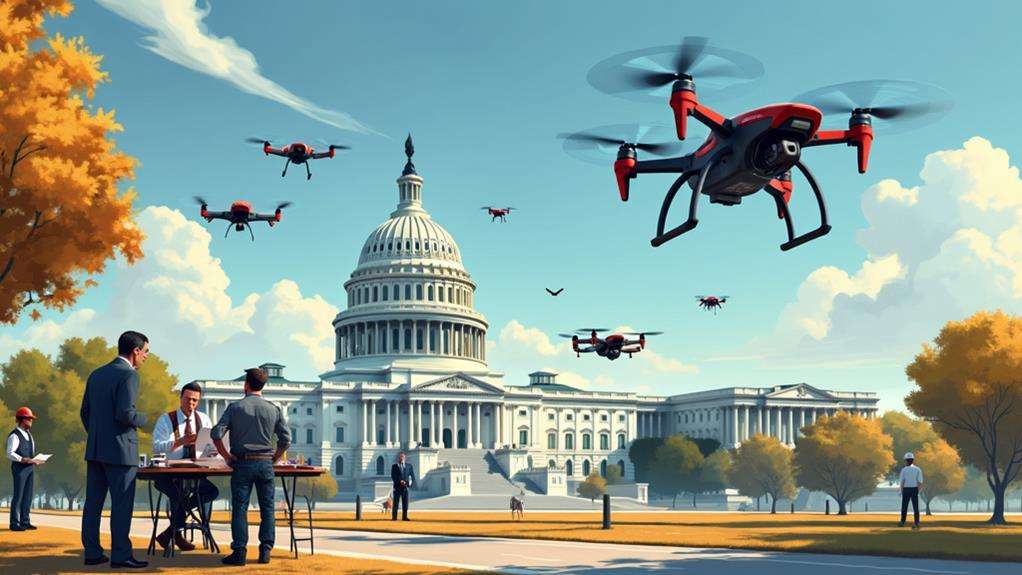
Navigating the regulatory and approval processes for UAV operations within the U.S. military involves multiple layers of oversight and authorization to ensure safe and legal use. The Department of Defense (DoD) must comply with strict regulatory frameworks for UAV operations, particularly for domestic missions, which require prior approval from the Secretary of Defense to align with national security and public safety standards.
Key considerations include:
- Certificate of Waiver or Authorization (COA): The FAA requires all DoD UAV operations to obtain a COA to access the National Airspace System (NAS).
- State-Level Utilization: State Governors can deploy smaller UAVs for specific missions, reflecting the decentralized nature of UAV operations.
- Delegated Approvals: Military Secretaries and Geographic Combatant Commanders can authorize the use of smaller UAVs, streamlining processes for less critical missions.
- Limitations on Armed UAVs: Armed UAVs are restricted to training, exercises, and testing within U.S. airspace, prohibiting their use in active domestic combat.
- Comprehensive Oversight: Every UAV operation is rigorously scrutinized to ensure compliance with federal and state regulations.
This framework ensures that UAV operations are conducted safely, lawfully, and in alignment with national interests.
Training and Operational Use
Regulatory and approval processes ensure UAV operations are safe and legal, but the true value of UAVs is evident in their training and operational applications. The U.S. military operates over 11,000 unmanned aerial vehicles (UAVs) for various purposes, including domestic training and overseas missions. These UAVs are crucial for preparing personnel for real-world scenarios. For instance, by mid-2014, more drone pilots were trained than fighter and bomber pilots combined, reflecting an increasing reliance on UAV technology for military operations.
In 2005 alone, tactical UAVs logged over 100,000 flight hours in Operations Enduring Freedom and Iraqi Freedom, showcasing their extensive use in combat. This high level of operational use underscores the importance of UAVs in ensuring mission success and troop safety. As of January 2014, the U.S. Air Force had approximately 1,300 remotely piloted aircraft (RPA) pilots, representing 8.5% of the total pilots in the service.
Most UAS operations focus on realistic training for overseas missions, with millions of flight hours logged globally since 2006. This extensive training ensures that UAV operators are well-prepared for combat operations, making UAVs indispensable for modern military strategy.
Technological Advancements

Technological advancements in UAVs are transforming the operational landscape, driven by ongoing research and development aimed at enhancing functionality and performance. These advancements are expanding the possibilities for military operations, significantly augmenting operational capabilities.
The MQ-X UAV exemplifies cutting-edge drone innovations, emphasizing stealth, speed, and multi-mission capability. It marks a significant step forward in meeting the diverse requirements of modern combat scenarios. Concurrently, research and development efforts are producing smaller, lighter missiles specifically designed for UAVs, enhancing their effectiveness and precision.
The adoption of Linux-based systems for controlling drone fleets represents another major breakthrough, streamlining operations and offering improved control mechanisms. This transition enhances efficiency and provides a more robust and versatile platform for military operations.
Future UAV designs will prioritize versatility and adaptability, ensuring they can perform various roles in different combat scenarios. The cost of these advancements ranges widely, from thousands to tens of millions of dollars, reflecting the diverse needs and applications within the military.
- Stealth and speed enhancements in the MQ-X UAV
- Smaller, lighter missiles for increased UAV effectiveness
- Linux-based systems for improved drone fleet control
- Versatile designs for future UAVs
- Costs ranging from thousands to millions of dollars
Ethical and Public Considerations
Considering the ethical and public implications of UAVs, civilian casualties cannot be overlooked, constituting approximately 24% of drone strike victims. Legal scholars and international bodies debate the legitimacy and regulation of UAV use, underscoring the need for clearer laws. Public opinion is divided; while there is significant support for UAVs in military operations, many question the morality and legality of targeting individuals abroad.
Civilian Casualty Impact
Civilian casualties from UAV strikes, estimated between 5% to 20%, raise significant ethical concerns about the impact of drone warfare on non-combatants. With approximately 24% of drone strike casualties being civilians, it's evident that precision targeting in populated areas carries substantial risks. This underscores the need for clear ethical guidelines and legal standards governing these operations.
To address these concerns, transparency and accountability are crucial. Understanding decision-making processes and determining responsibility when errors occur are essential. These ethical concerns are not merely theoretical; they impact real lives and communities.
Key considerations include:
- Transparency: Disclosing who authorizes drone strikes and the criteria used.
- Accountability: Ensuring decision-makers are held responsible for civilian harm.
- Precision targeting: Improving technology to minimize civilian casualties.
- Legal clarity: Establishing clear international guidelines for drone use.
- Ethical guidelines: Aligning military actions with moral standards.
Public opinion reflects these concerns. A 2013 poll found that 48% of voters viewed targeting citizens abroad via drone strikes as illegal. The UN General Assembly's focus on this issue in 2015 further underscores the need for stringent ethical and legal frameworks to mitigate civilian harm.
Legal and Moral Debates
The ethical and legal debates surrounding UAV (Unmanned Aerial Vehicle) usage present a complex array of moral considerations and public sentiment. The significant ethical concerns are accentuated by the fact that approximately 24% of drone strike casualties are civilians, raising serious issues about collateral damage in military operations. Although legal frameworks suggest that the use of lethal force via UAVs may be justified under international law, the lack of clear legal guidelines keeps the debate ongoing.
Public opinion on drone strikes is divided. A 2013 poll indicated that 48% of voters believed targeting citizens abroad was illegal, yet many still supported military and CIA UAV operations against perceived threats. This divided sentiment underscores the need for greater transparency and accountability in drone operations. Media coverage frequently highlights civilian casualties, further amplifying public concerns.
The UN General Assembly has noted these issues, emphasizing the necessity for robust legal frameworks and ethical guidelines to govern UAV usage in warfare. Balancing military effectiveness with the moral imperative to avoid civilian harm is critical. Transparency, accountability, and adherence to international law are essential to addressing these ethical dilemmas.

